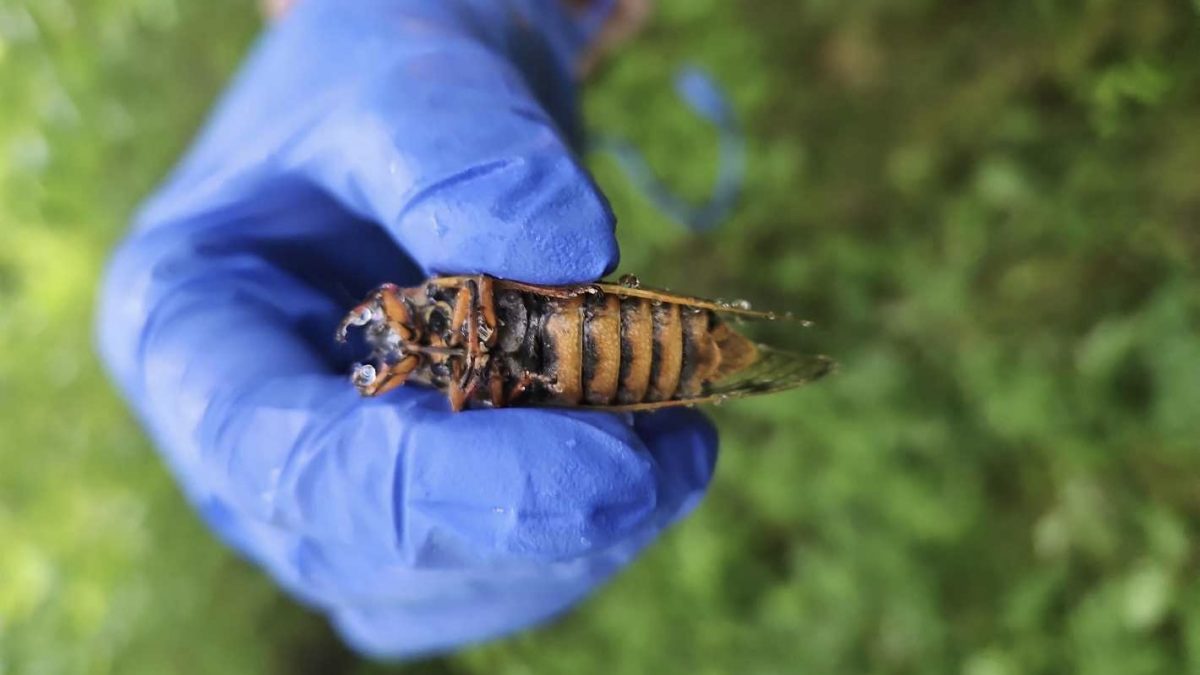Research almost two decades in the making: What can cicadas tell us about the Earth’s metals?
 ©Woods Hole Oceanographic Institution
©Woods Hole Oceanographic Institution May 14, 2025
Photos are available for use with credit to ©Woods Hole Oceanographic Institution
Woods Hole, Mass. (May 14, 2025) -- In the coming weeks, billions of cicadas will be emerging on Cape Cod and other parts of the country, eliciting responses ranging from “so what?” to total disgust. But to scientists at the Woods Hole Oceanographic Institution (WHOI) these noisy insects offer an opportunity to research their role in releasing mercury into the environment, and their impact on terrestrial food webs. This will be the final time cicadas will appear on the Cape until 2042.
Cicadas live in underground burrows about seven inches below the surface for the first part of their lives. While underground, they convert relatively inaccessible or unavailable resources, like nitrogen, carbon, and mercury, into forms more readily accessible to themselves and other organisms. By the time they emerge from the earth, cicadas and their carcasses are rich in nutrients.
WHOI chemist Laura Motta is taking a brief break from studying ocean creatures like plankton and krill to collect cicadas on Cape Cod, where the insects will be emerging from the soil for the first time in 17 years. Motta’s lab is investigating potential sources of mercury and how it's released into the environment when cicadas emerge, die, and decompose.
“In 2007, a separate study indicated cicadas could reach high levels of mercury, similar to fish,” Motta explains. “That study is what prompted us to investigate where they’re absorbing these amounts of mercury, if human activities play a role, and how it impacts higher levels of the food chain. We do that by examining isotopes, tracing the mercury back to the source.”
Motta says this form of biomonitoring mercury is new and will contribute towards the goals of the Minamata Convention, which aims to reduce mercury emissions. All major countries were asked to have a budget for mercury emissions and an attributable way to track it by 2025.
“The close relationship between plants and cicadas makes them a perfect organism to unravel the factors controlling the uptake and bioaccumulation of this neurotoxic pollutant in both terrestrial and aquatic food webs,” Motta says. “To find such large quantities of mercury in an insect is rare. Fireflies have been studied in the past, but present far lower numbers than cicadas. It’s still unknown if mercury levels like cicadas are present in other insects.”
Motta has collected samples from previous broods in Illinois, Alabama, and Michigan. This study will wrap up after cicadas emerge in New England this season.
###
About Woods Hole Oceanographic Institution
The Woods Hole Oceanographic Institution (WHOI) is a private, non-profit organization on Cape Cod, Massachusetts, dedicated to marine research, engineering, and higher education. Established in 1930, its primary mission is to understand the ocean and its interaction with the Earth as a whole, and to communicate an understanding of the ocean’s role in the changing global environment. WHOI’s pioneering discoveries stem from an ideal combination of science and engineering—one that has made it one of the most trusted and technically advanced leaders in basic and applied ocean research and exploration anywhere. WHOI is known for its multidisciplinary approach, superior ship operations, and unparalleled deep-sea robotics capabilities. We play a leading role in ocean observation and operate the most extensive suite of data-gathering platforms in the world. Top scientists, engineers, and students collaborate on more than 800 concurrent projects worldwide – both above and below the waves – pushing the boundaries of knowledge and possibility. For more information, please visit www.whoi.edu.
